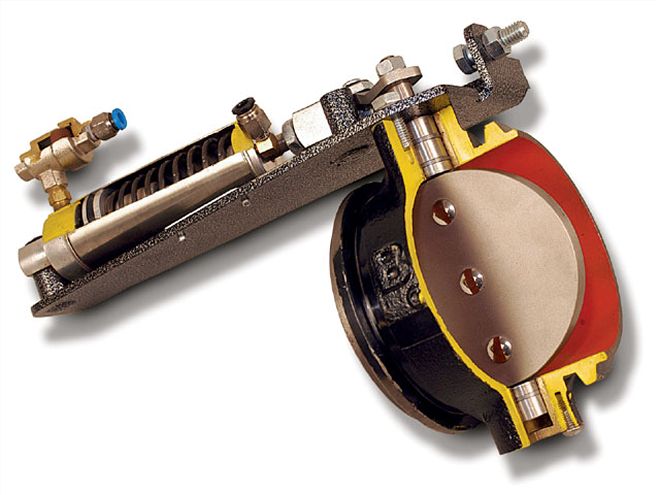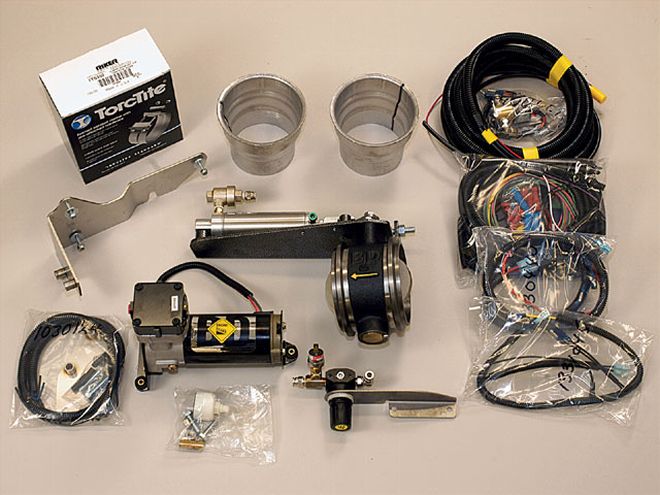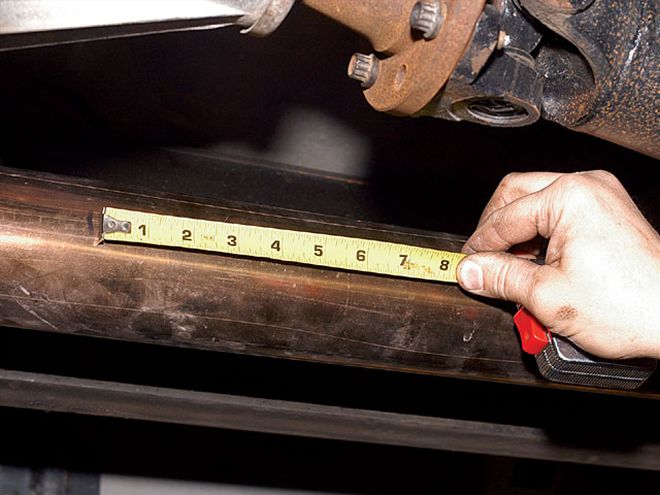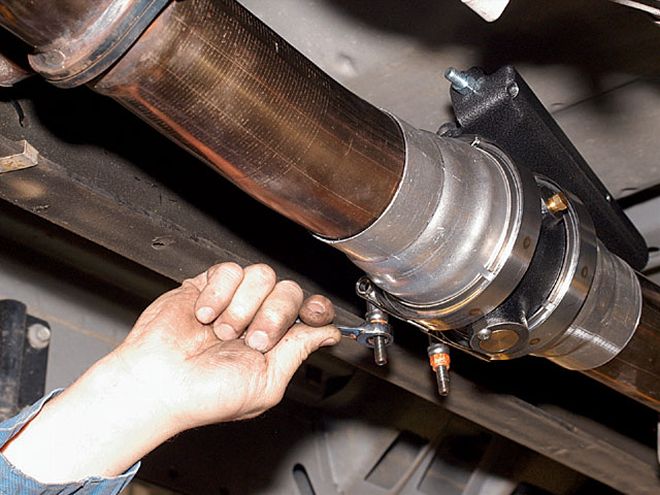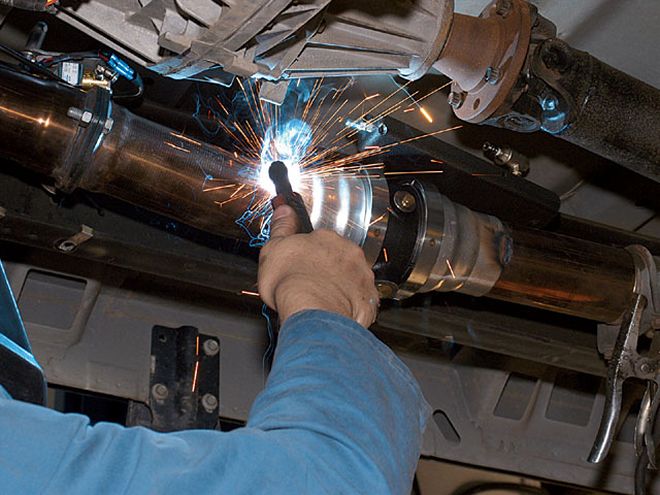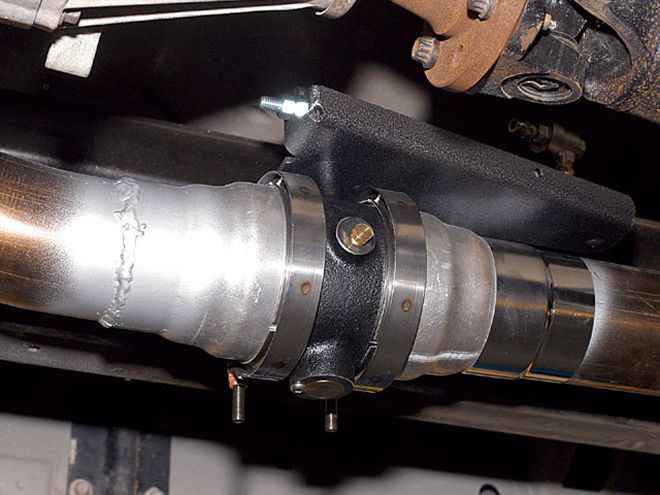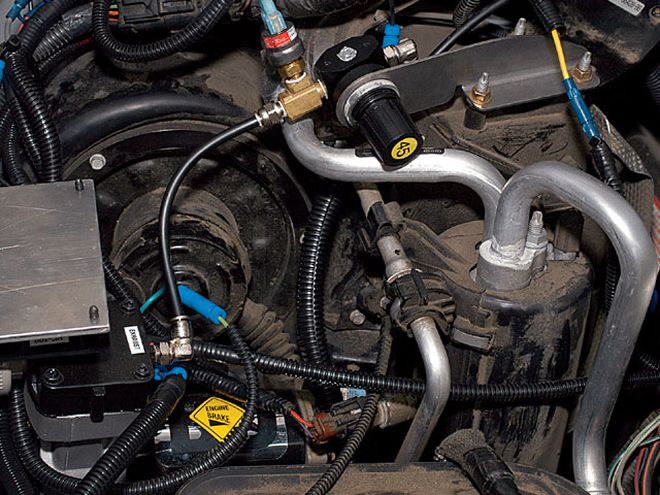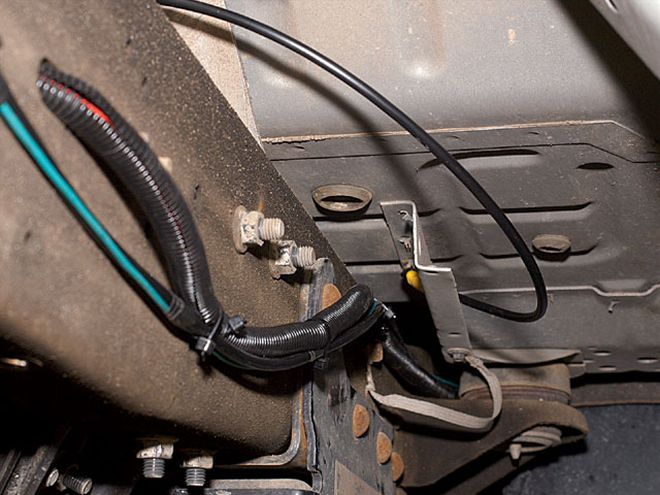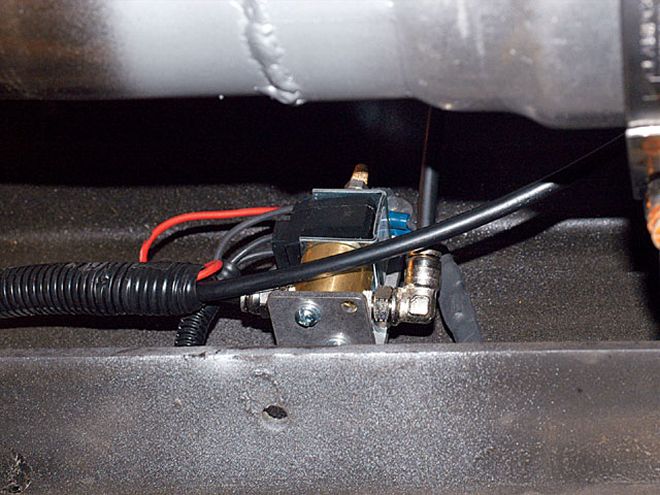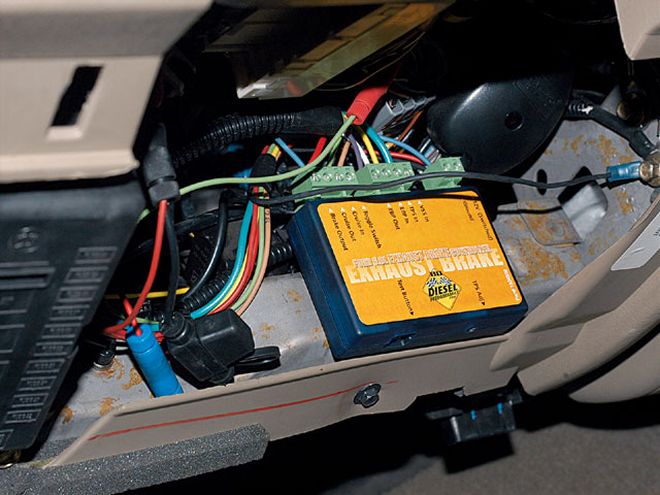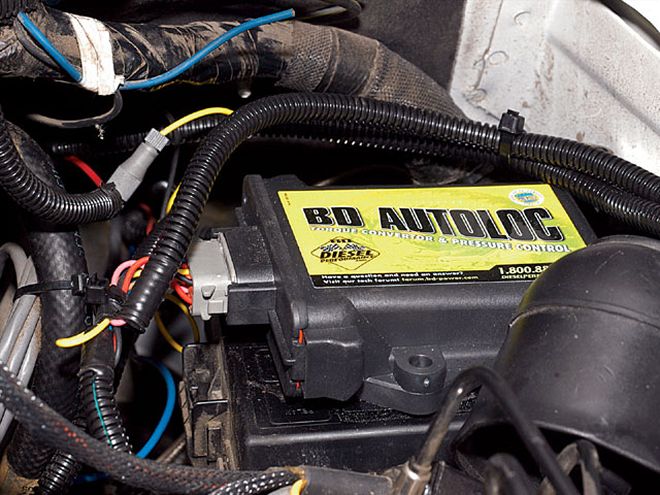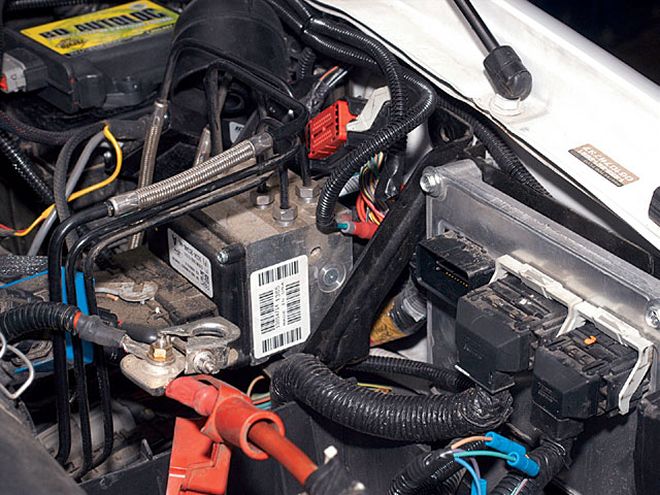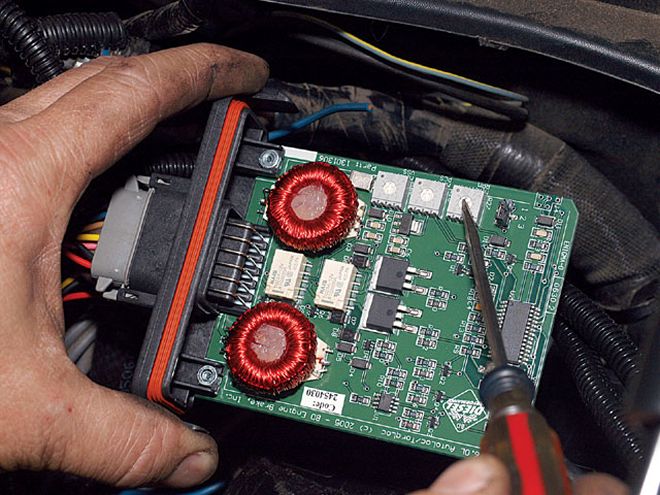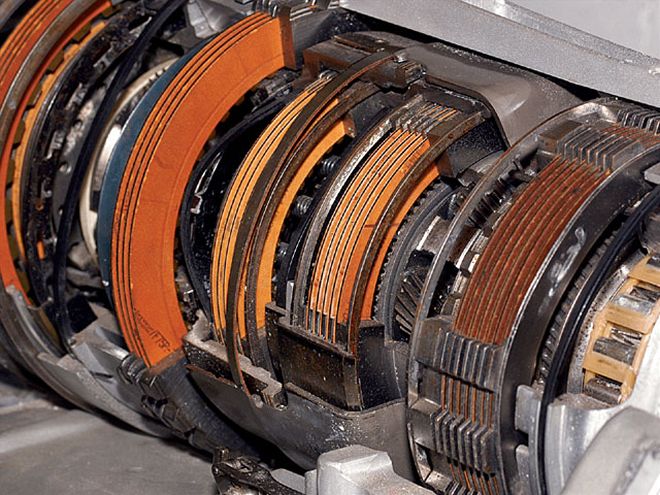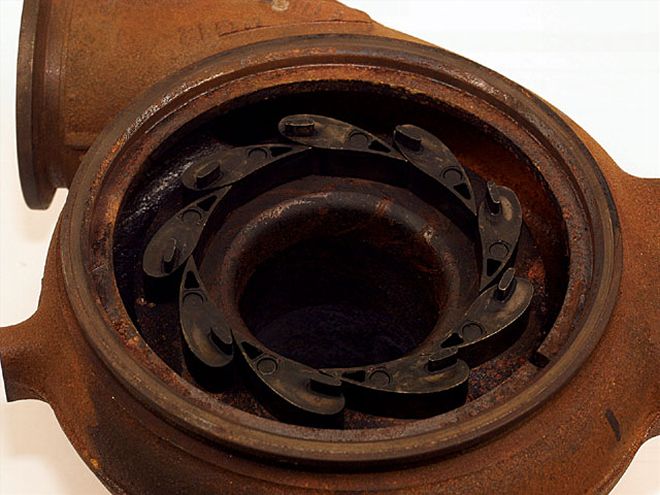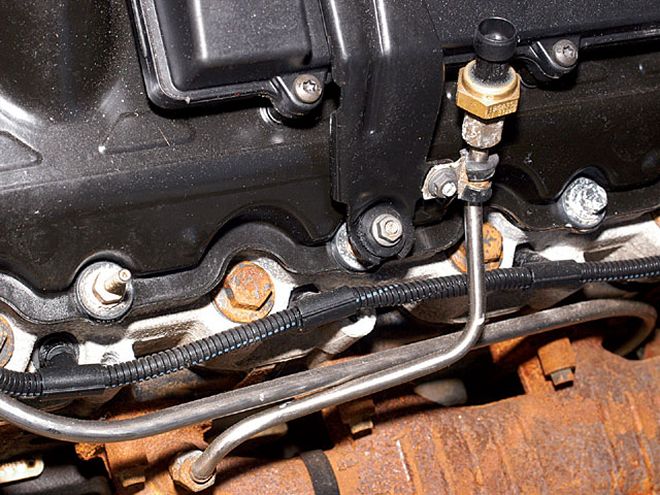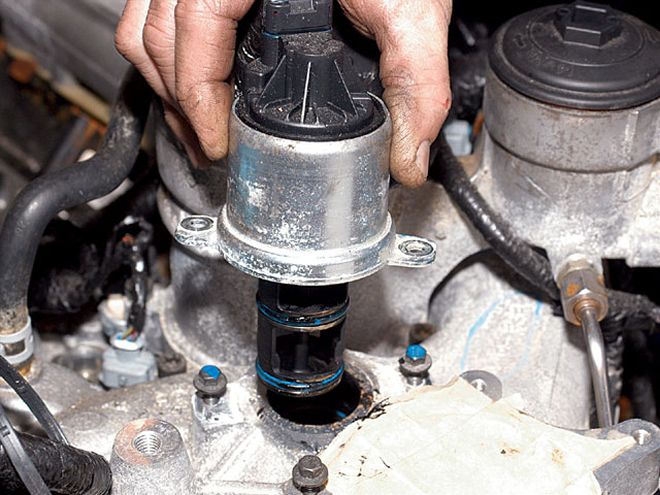Among the many characteristics that differentiate diesel and gasoline engines, a diesel's lack of engine braking is probably the least pronounced-yet one of the most significant. While diesels are widely known for their ability to haul freight up steep grades, they're also notorious for freewheeling down the other side, requiring frequent braking to keep speed under control. If you drive solo, this is probably not a big deal, but if you tow, you've no doubt noticed that a trailer can push your rig to scary downhill speeds.
An exhaust brake is an effective cure for this problem. Mounted on the discharge side of the turbo or in the exhaust pipe, an exhaust brake incorporates a butterfly valve that creates exhaust backpressure when closed. This backpressure flows all the way into the engine's cylinders, where it creates resistance on the pistons' upstrokes. The effect is similar to decelerating with a gasoline engine, except it's magnified several fold. A typical gasoline engine produces 3-11 psi of backpressure under ideal conditions, while an exhaust-brake-equipped diesel can generate up to 60 psi.
BD Diesel Performance has been building exhaust-brake systems for more than 30 years and has numerous applications for Dodge Cummins, Chevy/GMC Duramax, and 7.3L Ford Power Stroke applications-and now the company has introduced an exhaust-brake system for the Ford 6.0L Power Stroke (the only company to do so, as of press time). That's certainly not because the 6.0L is rare; the engine's emissions systems and electronics are more to blame than anything else.
"The 6.0L was the first Ford diesel with an EGR [exhaust gas recirculation] valve, which was combined with a variable-geometry turbo [VGT]," explains BD's vehicle service manager, Blair Parker. "That presented some challenges because if you don't modify the signals the computer sees when the exhaust brake is closed, you've got problems."
Specifically, Parker explains, if you show the computer too much backpressure, it will command the VGT's vanes to a full open position, creating sluggish response when throttle is reapplied. But if you don't show it enough backpressure, the EGR valve opens and dumps the backpressure in the system.
With the flanges and clamps on the exhaust pipe, the BD brake is installed and clamped into place to determine exact fit, then welded.
To combat these niggles, BD manipulates several areas of the engine-control software. The BD brake controller taps into the factory backpressure sensor that controls the EGR and VGT function, providing it with the appropriate backpressure value. The vehicle's factory throttle-position sensor (TPS) is used for precise exhaust-brake activation, while the vehicle-speed sensor (VSS) is used to turn the brake off at speeds too low to create effective engine braking. Finally, the BD brake controller monitors the cruise-control input. "If we didn't do this, the brake would apply when the cruise control was activated and the throttle was released," Parker says. "The cruise control would be trying to fuel the engine while the brake was trying to slow it down. So when the exhaust brake is activated, it automatically disables the cruise control."
On 6.0L Power Stroke applications, the BD brake mounts in the vehicle's exhaust system and is activated using an integral air cylinder and onboard air compressor (included with the kit). When the signal to activate is received by the BD exhaust-brake controller, the compressor is energized and the control solenoid opens, allowing the air into the cylinder to close the exhaust brake. The BD brake incorporates a butterfly valve shaft that is offset so the surface area on the upstream side of the valve is larger than the downstream side. In this way, the exhaust pressure can push against the air pressure in the cylinder to regulate the backpressure. The higher the air pressure in the air cylinder, the higher the backpressure. In this application, the user adjusts the air cylinder to achieve a maximum of 45 psi of exhaust backpressure (the factory-specified maximum) at peak braking rpm-usually set just below engine redline. And because the system is activated using a pressurized air cylinder instead of a vacuum, exhaust-brake effectiveness won't diminish at high altitudes.
As engine rpm drops, so will backpressure. But here's where the BD brake has an advantage: the company's patented variable-orifice technology. The BD brake butterfly valve is solid and only opens enough to allow excessive backpressure to escape. BD has found that this method provides strong braking throughout the engine's operating range, not just at higher rpm.
The final components of the BD brake system are its Autoloc and Pressureloc modules, which control torque-converter lockup and transmission-line pressure. A manual transmission always maintains a mechanical connection between the engine and transmission; with an automatic, this isn't the case. The transmission's torque converter has two modes: unlocked (or fluid coupling) and locked, where the clutches in the torque converter apply, creating a mechanical coupling. When the torque converter is in an unlocked mode, an exhaust brake can't function to its full potential because there is a certain degree of naturally occurring slippage in the fluid-coupling mode. To draw a comparison, imagine downshifting a manual transmission then letting the clutch out only halfway; there would be some slowing, but not as much as if you released the clutch pedal completely. The Autoloc maintains torque-converter lockup in all gears when the BD brake is applied, resulting in maximum retarding power.
Since much of the transmission's function is based on throttle position, transmission-line pressure drops when the throttle is released because the computer thinks the vehicle is coasting. To rectify this issue, the Pressureloc increases line pressure to 90 percent of maximum when the BD brake is activated, keeping the transmission clutches firmly applied to prevent slippage.
We recently visited BD to get an idea of what's involved with the installation and to take a testdrive in the company's Ford F-350. Without the BD brake activated, the truck slowed down almost as if it were shifted into Neutral, but with it activated, the difference was remarkable. If you can imagine downshifting a big-block gas engine into Low gear from 60 mph, you're starting to get the picture. But instead of a violent action, the truck felt as though it were being dragged to a stop by a powerful magnet-a progressive, controlled, yet very powerful slowing.
